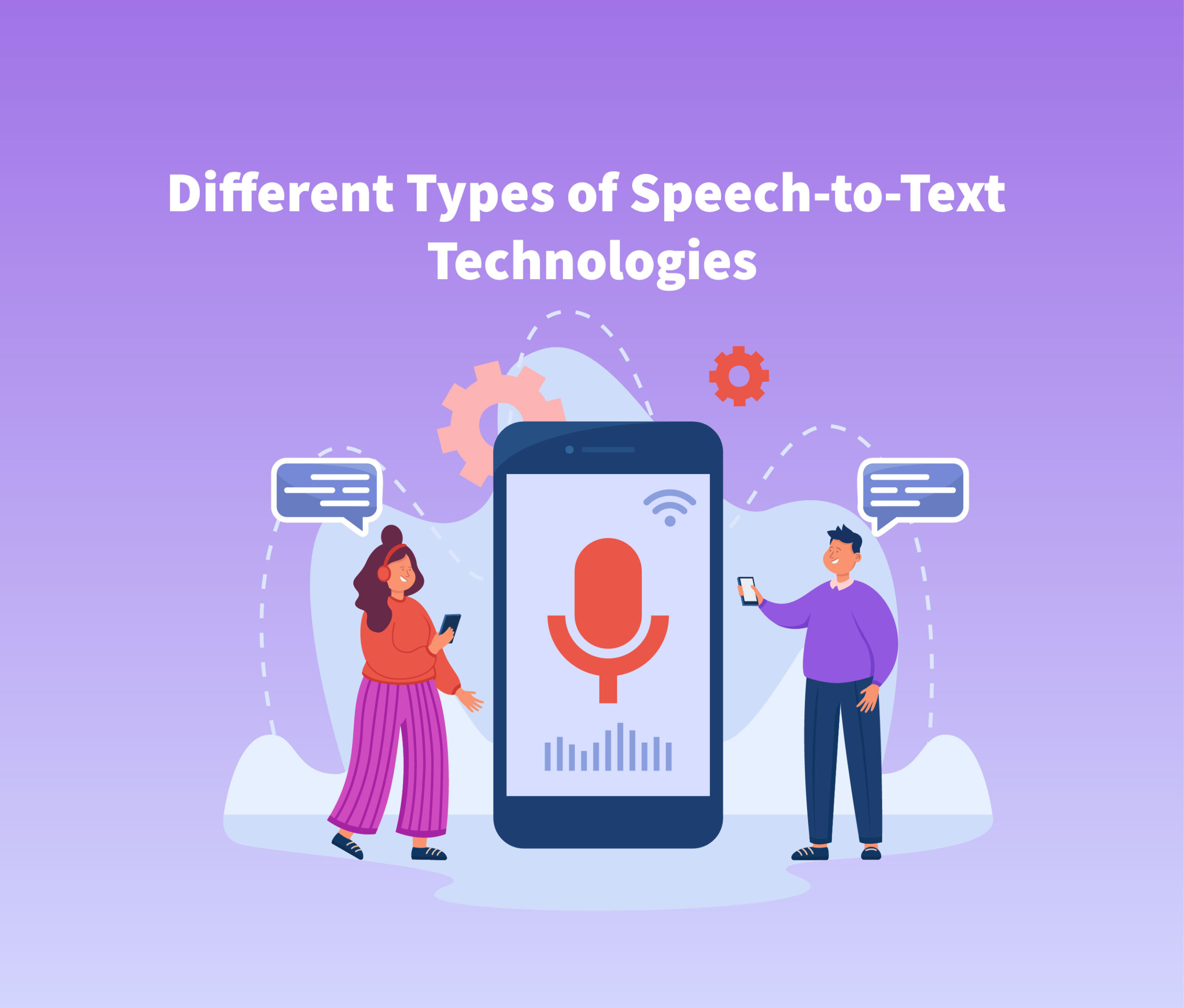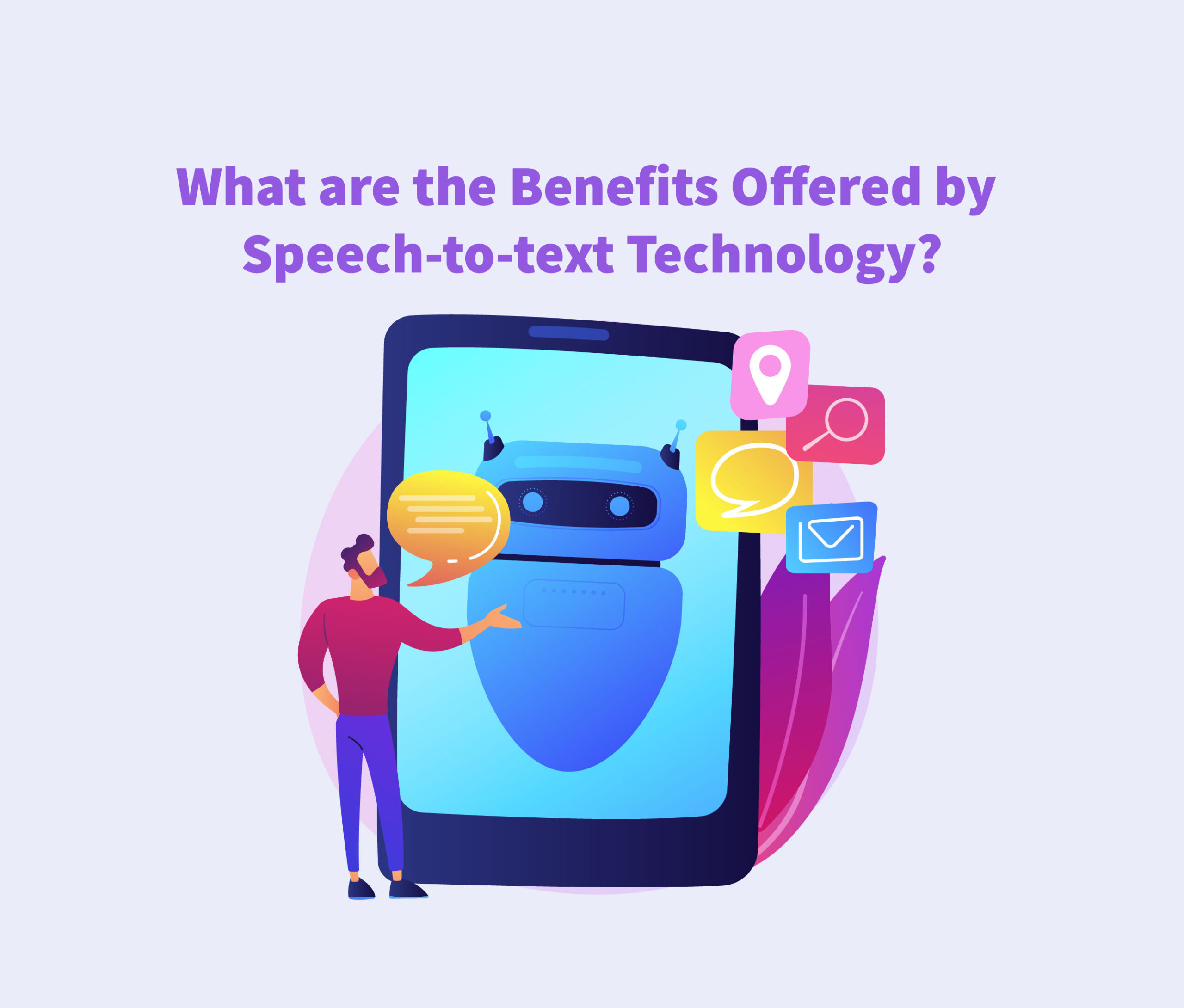A decade ago, if someone told us there would be an application or software that could automatically transcribe speech-to-text, we would have laughed at it, wouldn’t we? Fast forward to now, this has become a normal thing. Let us focus on the intricacies of this technology.
What is Speech-to-Text?
Speech to text is essentially a software that understands and translates spoken words into written text using complex computer language. You might also hear it referred to as speech recognition or computer speech recognition. There are specific apps, tools, and gadgets that can convert spoken words into text instantly, allowing real-time interaction with the text.
How Does Speech-to-Text Work?
Speech-to-text software is a tool that works by hearing audio and supplying a detailed, editable transcript on a specific device. It accomplishes this through voice recognition. Just imagine a computer program using language-based algorithms to sift through sounds from spoken words, and then turning those sounds into text using something known as Unicode. The transformation of speech to text is executed through a sophisticated machine learning model that needs several steps. Let’s delve deeper into how this intriguing process unfolds:
- When someone speaks, their words create a series of vibrations. Speech to text technology records these vibrations and converts them into a digital language using an analog-to-digital converter.
- The analog-to-digital converter captures sounds from an audio file, meticulously measures the waves, and filters them out to pinpoint the significant sounds.
- The sounds are carefully broken down into tiny fractions – hundredths or even thousandths of a second. Then, these segments are matched with something called phonemes. A phoneme is like a sound building block that makes one word different from another in any language. To give you an idea, there are roughly 40 of these phonemes in English.
- Next, we funnel the phonemes through a network using a mathematical model. This model essentially stacks them up against familiar sentences, words, and phrases.
- The text is then displayed either as text or a computer-generated request, based on the most probable interpretation of the audio.
Different Types of Speech-to-Text Technologies
 Two primary categories of speech-to-text technology exist:
Two primary categories of speech-to-text technology exist:
- Speaker-dependent: Primarily applied to dictation applications
- Speaker-independent: Frequently utilized for phone applications
Built-in dictation technology is the primary software and service that these two speech recognition systems depend on to operate properly. Nowadays, dictation features are included in a lot of devices, including tablets, computers, and smartphones.
Amazon Transcribe is one of the best options out there.
What are the Benefits Offered by Speech-to-text Technology?
 Speech to text technology, like all tech tools, offers a wide array of benefits that help us streamline our everyday routines. Let’s delve into some of the primary perks of utilizing speech-to-text:
Speech to text technology, like all tech tools, offers a wide array of benefits that help us streamline our everyday routines. Let’s delve into some of the primary perks of utilizing speech-to-text:
- Saves time: With automatic speech recognition technology, you’ll get precise transcripts immediately – it’s a real-time-saver.
- Cost-effective: Most speech-to-text apps and software do come with a subscription fee, and there are even some available for free. However, when you weigh up the costs, subscribing to speech software turns out to be a lot more budget-friendly compared to going for human transcription services.
- Improve audio and video material: The ability to convert speech to text lets us instantly transform audio and video data into subtitles or quick transcripts.
- Seamless customer experience: Using natural language processing, we can transform how customers interact with our service. It makes everything more accessible, easy to use, and seamless.
Also Read: Cognitive Computing: The Bridge Between Humans and Machines
What are its Limitations?
Like any innovation, new technologies such as speech-to-text aren’t flawless. There are some significant shortcomings of the speech to text feature.
It isn’t perfect. While dictation technology is a powerful tool, it is still in its early days, which means there are some gaps in its overall performance. Since it produces verbatim text only, you can end up with an inaccurate or awkward transcript or missing specific quotations.
It lacks a human touch! Since speech-to-text isn’t always 100% accurate, we need someone to make a few adjustments to the spoken information to make sure it’s just right.
For the best results from voice recognition software, it’s important to make sure that the audio you record is clear and easy to understand. This means having no background noise, good pronunciation, no accents, and only one person talking at a time. Remember to also give voice commands for punctuation.
If you’re working on a tight budget, free speech-to-text software can definitely come in handy. Yet, when it comes to converting a lot of audio to text, you’ll need something a bit more heavy-duty. This is where paid speech-to-text software shines. It is typically more accurate, quicker, and comes with additional features and support.
How to Choose the Best Speech-to-Text Software?
There are loads of options out there, so picking the best speech-to-text software might seem pretty tough. To make it easier, use the checklist below to weigh different options and choose the one that suits you best:
- No need for any extra software – the most user-friendly speech text software just needs an internet connection, not more software.
- High accuracy – Every speech-to-text service provides a certain level of reliability. However, some services prioritize transcription, taking extra measures to give you top-notch accuracy.
- Multi-language support – If you require support for multiple languages, you should pick out a speech to text software that can cater to your diverse language requirements.
- App Compatibility – Many speech-to-text services can be integrated into various apps. This feature is crucial if you aim to use the service on different platforms.
Final Thoughts
Speech-to-text technology has revolutionized the way we interact with digital platforms and has become an invaluable tool for various industries and individuals. Its ability to convert spoken language into written text in real time has enhanced productivity, accessibility, and convenience. As the technology continues to evolve, we can expect even more accurate and efficient speech recognition systems, opening up new possibilities for automation and its seamless integration into our daily lives.


